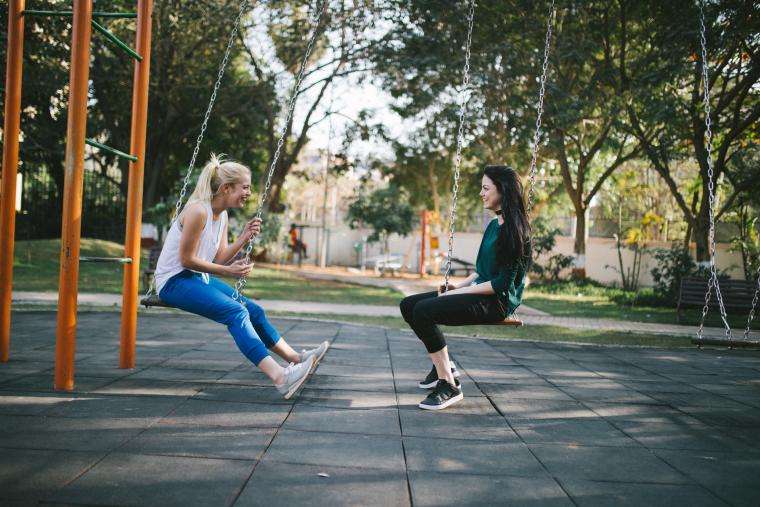- Managing your Practice
-
- Your Benefits
-

Introducing the ultimate Club MD experience
From work to play, and everything in between, we provide you with access to hundreds of deals from recognizable, best-in-class brands, elevating every facet of your life – from practice supports to entertainment, restaurants, electronics, travel, health and wellness, and more. Your Club MD membership ensures that these deals are exclusive to you, eliminating the need to search or negotiate.
Welcome to the ultimate Club MD experience. Your membership, your choices, your journey.
-
- Advocacy & Policy
-
- Collaboration
- News & Events
-

Stay Informed
Stay up to date with important information that impacts the profession and your practice. Doctors of BC provides a range of newsletters that target areas of interest to you.
Subscribe to the President's Letter
Subscribe to Newsletters
-
- About Us
-

The Road Ahead
July 16, 2021
President's Blog
I’m writing this blog from my parents’ home in Alberta where – now that recreational travel is permitted – I am taking much needed time to recharge. As a doctor, I couldn’t help but observe the profound changes around me as this province, and eventually our whole country, emerge from the COVID-19 pandemic.
Alberta removed all of its population-wide public health restrictions on July 1 – mask mandates, social distancing, limits on gatherings. Depending on who you talk to, the reaction to this ranges from abject terror to criticism it was not done sooner, though most Albertans I talk to are somewhere in the middle. There is a sense of cautious relief, growing joy, and a collective taking stock of the historic events that have transpired over the past 16 months.

Vaccination rates in Alberta are not far off from what we see in BC. There’s more people fully vaccinated, but somewhat fewer who have opted to receive their first dose. There are a few pockets where vaccination rates remain stubbornly low. The big cities are highly vaccinated with first doses having reached upwards of 75% or more of eligible people. In comparison, BC has reached 80% of eligible people for their first dose.
In urban areas, staff of most stores continue to wear masks and a few stores still enforce limits on the number of shoppers. Mask use by customers is a mixed bag, with an estimated 40-60% of people wearing masks when they shop in the city – which coincidentally is similar to the number who are fully vaccinated. Rural areas are quite the opposite. There are few masks to be seen by staff or customers, rather I actually saw a store owner remind someone masks were no longer necessary. Customers aren’t criticized for wearing a mask though, indoor areas aren’t particularly crowded, and large groups still tend to congregate outdoors where it’s known COVID-19 transmission is low. Apart from a few hotspots, rural Albertan communities (as in BC) have seen relatively fewer cases of COVID-19 compared to the cities.
I grew up in Alberta and one of my childhood staples was the Calgary Stampede. I attended the ‘Greatest Outdoor Show on Earth’ nearly every year and worked numerous grounds jobs as a teen. Last year amid the pandemic, the Stampede was cancelled for the first time in over 100 years – a feat even two world wars couldn’t do. This year there was much controversy over the decision for it to go ahead, so I decided to see it for myself. The Stampede was a shadow of its usual boisterous self. Attendance was maybe 50%, there were far fewer attractions and rides, stalls were spaced far apart, and although no social distancing was enforced, I noted that many people spontaneously kept their distance in lines. There were certainly places where people bunched together, but this was nearly exclusively outdoors. Indoor attractions were substantially reduced in scope, there was a great deal of space between exhibitors, and I noticed increased ventilation. All of the indoor areas felt sparse compared to the crush of humanity I’ve experienced in previous years. After the stories about anti-maskers, vaccine conspiracists, and anti-lockdown protestors, I had prepared for potentially negative interactions. But what I encountered was the opposite. People were friendly and respectful of other’s personal health choices (eg. wearing a mask and keeping distance) regardless of age or background.
Two weeks into this “new normal” and the COVID-19 case numbers in Alberta remain stable. Hospitalizations continue to drop. Authorities are using increasingly creative means to vaccinate more people including a lottery with a million dollar prize. In the end, I suspect that social pressure, 1-on-1 outreach by family doctors and other trusted individuals, and intrinsic factors such as knowing someone who experienced debilitating effects from COVID-19 will ultimately carry the day. There has been talk of making vaccination mandatory, particularly for workplaces where COVID-19 outbreaks have proven deadly such as long-term care homes. And planning is already taking place in case booster shots are required after individuals are fully vaccinated. Yet while we debate these points, the vast majority of the world remains completely unvaccinated and thousands are still dying each day.
It seems to me that no matter your risk tolerance or personal views about how COVID-19 has been handled in this country, we are in an enviable position. And we will be better off still if we encourage more people to get vaccinated, if we take prudent and reasonable precautions in response to the latest data, and if we enjoy some of our coming freedoms that have been hard won – and remain out-of-reach for most others around the world.
If that last point causes you disquiet, then I encourage you to make your views known. The COVID-19 pandemic won’t truly be behind us until everyone everywhere has access to vaccines. We can’t live in a vaccinated bubble forever.
I’ve enjoyed my time in Alberta, but I’m looking forward to returning home to BC. We have some bright and interesting days ahead.
- Dr Matthew Chow




